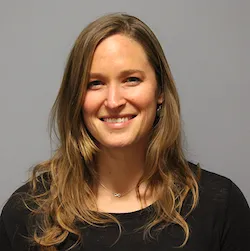Dr. Mary Collins, a National Socio-Environmental Synthesis Center (SESYNC) Postdoctoral Fellow, attended the American Sociological Association (ASA) annual meeting held August 10–13, 2013, in New York, NY, to present her paper titled “Industrial Disproportionalities, Environmental Inequality, and the Powers of Legitimization.” The paper was included in a panel sponsored by ASA’s Section on Environment and Technology (E&T) that addressed Environmental Conflict, Inequality, and Power.
“With only four E&T panels on the conference schedule, it was a privilege to present my work, receive feedback from informed discussants, and field questions from leaders in the field of environmental sociology,” Dr. Collins said.
Dr. Collins’s research focuses on the mechanisms by which socio-political power disparities influence the creation of ecological harm and environmental injustice, and their relationship to socio-ecological vulnerability. Her paper “Industrial Disproportionalities, Environmental Inequality, and the Powers of Legitimization” presents a new way of thinking about links between industrial polluters (e.g., firms, facilities, factories) and environmental justice (EJ) communities (places where diverse residents bear more than their fair share of pollution risk). Most EJ research looks at polluters as a group, but Dr. Collins finds that looking at polluters individually can isolate a few single polluters that are hundreds (or even thousands) of times more risky than expected. Her research shows that EJ communities are disproportionately impacted by over-polluters, and she hypothesizes that over-polluters exist, in part, because they maintain a privileged position of power in society.
Paper Abstract
Several key studies have revealed the existence of a small number of heavily polluting facilities that are responsible for generating the majority of human health risk. Early work has also suggested that such outlier facilities tend to be poor performers economically, as well as environmentally, and that they place disadvantaged communities at particular risk. To date, little scholarly attention has been devoted to these extreme variations in facility-based risk, their significance from environmental equity, and the societal mechanisms that make these patterns seem legitimate. Further, this research strives to move beyond the traditional community-based environmental justice frame to focus on industrial risk intensity and its relationship to relevant community factors. I contrast the riskiest polluters (“toxic outliers”) to the lower risk polluters (“mainstreamers”) in regard to their environmental justice performance. I find that nonwhite and low income populations bear the overwhelming majority of risk from outliers and that outliers have significantly worse environmental justice performance than mainstreamers. I also explore the extent to which such injustices could be relieved if environmental policy compelled outliers to reduce their toxic burdens to the average for their sector. The findings from this work show that disproportionate patterns in pollution production are highly reproducible and influenced by power-based societal dynamics. Findings also suggest that more emphasis should be placed on studying the distribution of environmental privileges as well as environmental problems and on understanding the inherent interconnections between these two sides of environmental inequality.
This year’s annual ASA meeting theme was Interrogating Inequality: Linking Micro and Macro. Click here to learn more.
